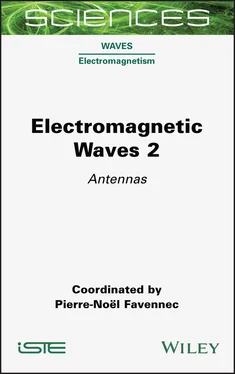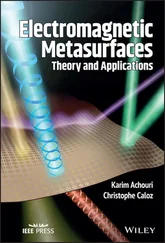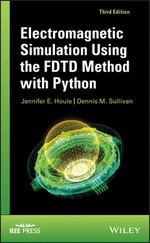248 245
249 246
250 247
SCIENCES
Waves, Field Directors – Pierre-Noël Favennec, Frédérique de Fornel
Electromagnetism , Subject Head – Pierre-Noël Favennec
Electromagnetic Waves 2
Antennas
Coordinated by
Pierre-Noël Favennec

First published 2020 in Great Britain and the United States by ISTE Ltd and John Wiley & Sons, Inc.
Apart from any fair dealing for the purposes of research or private study, or criticism or review, as permitted under the Copyright, Designs and Patents Act 1988, this publication may only be reproduced, stored or transmitted, in any form or by any means, with the prior permission in writing of the publishers, or in the case of reprographic reproduction in accordance with the terms and licenses issued by the CLA. Enquiries concerning reproduction outside these terms should be sent to the publishers at the undermentioned address:
ISTE Ltd
27-37 St George’s Road
London SW19 4EU
UK
www.iste.co.uk
John Wiley & Sons, Inc.
111 River Street
Hoboken, NJ 07030
USA
www.wiley.com
© ISTE Ltd 2020
The rights of Pierre-Noël Favennec to be identified as the author of this work have been asserted by him in accordance with the Copyright, Designs and Patents Act 1988.
Library of Congress Control Number: 2020937434
British Library Cataloguing-in-Publication Data
A CIP record for this book is available from the British Library
ISBN 978-1-78945-007-1
ERC code:
PE2 Fundamental Constituents of Matter
PE2_6 Electromagnetism
Pierre-Noël FAVENNEC
ArmorScience, Lannion, France
Any electric charge set in motion produces electromagnetic radiation which propagates in space. This property is the basis of radioelectric, or photonic radiation production, used in particular in radio, television and communication systems among others. Any system supplied with electricity, or any element provided with electric charge, emits electromagnetic radiation and generates an electric and/or magnetic field in its close, or even distant, vicinity which is known as an “electromagnetic field”.
Before Maxwell’s work, we understood physical reality in terms of material points. After it, we represented physical reality with continuous fields. The concept of a field finds its origin, and its name, in the idea of describing a physical phenomenon from an underlying medium, which would explain the physical properties of space (a field of forces for a field of wheat subjected to the wind). Following Maxwell’s research, the fields acquired an autonomous existence and reached the status of physical beings in their own right, no longer describing “the place where” but “the thing that”. This movement was largely supported by the development of the mathematical formalism of the fields, in terms of partial differential equations. This, with regard to electricity and magnetism, is the content of Maxwell’s theory which he published in 1861.
Maxwell is one of the greatest scientists, who changed our view of the world. He made a decisive contribution to the unifying and synthetic vision of electricity and magnetism. He showed that two domains, that of electric charges and their interactions and that of currents and magnetism, were only two facets of the same problem. Synthesized by four equations combining in the same formalism their respective characteristic magnitudes. He stated these interactions in clear mathematical language: Maxwell’s equations. The vision of a universe formed by particles was succeeded by a world governed by fields, acting from a distance.
The electromagnetic field is the set of vector fields (  ,
,  ). The properties of the electromagnetic field at a point in space are determined by the properties of the electric field
). The properties of the electromagnetic field at a point in space are determined by the properties of the electric field  and the magnetic field
and the magnetic field  at a point. In physics, the term “field” refers to the situation where we are in the presence of a physical magnitude distributed in a given region of space. This magnitude has a value determined at each point in this space and at all times. Having an area of space where there is an electromagnetic field, means that at each point in this space, we have two vector variables
at a point. In physics, the term “field” refers to the situation where we are in the presence of a physical magnitude distributed in a given region of space. This magnitude has a value determined at each point in this space and at all times. Having an area of space where there is an electromagnetic field, means that at each point in this space, we have two vector variables  and
and  .
.
Electromagnetic waves are produced by excited matter. The deexcitation of the excited source produces around it a periodic variation of the electromagnetic field which propagates gradually in the vacuum at the phase speed (or propagation speed) close to 300,000 km per second. Depending on their emission frequency domain, they have different names: radio waves for the lowest frequencies, infrared waves, visible optical waves, then ultraviolet, then for the highest frequencies, X-rays and gamma rays. The electromagnetic wave propagates: a variable electric field generates a variable magnetic field and conversely a variable magnetic field generates a variable electric field. The conjoint propagation of these variations in a region constitutes a continuous wave phenomenon, capable of propagating (across the vacuum at 300,000 kilometers per second), transporting energy without the need for material support.
Waves are vibrations that propagate from one place to another in space, in a material medium or in a vacuum. Electromagnetic vibrations (electromagnetic waves) are waves obeying the laws of electromagnetism. Mechanical vibrations (pendulum, acoustics, etc.) obey the laws of mechanics, but often these mechanical vibrations are in fact fundamentally electromagnetic, due to the electromagnetic interactions of atoms and molecules of materials; they are described by “approximate” laws according to movements following the laws of mechanics.
Characterizing or measuring an electromagnetic field is carried out via current or voltage measurements. The electromagnetic field located in one place is the set of vector fields (  ,
,  ). Sensors or antennas measure, at a given point, the currents or voltages resulting from the field from the different vector magnitudes
). Sensors or antennas measure, at a given point, the currents or voltages resulting from the field from the different vector magnitudes  and
and  . Subsequent processing can, if useful, select the different frequencies.
. Subsequent processing can, if useful, select the different frequencies.
In our everyday life, the environmental electromagnetic field does not arise from a single source. There are fields of natural origin (the sun, galaxy, geomagnetism, etc.) and those of human origin (household materials, transport, telecommunications, energy supply, etc.). Each point on the planet is subjected to a fairly intense electromagnetic “bath” depending on its location. The drawing below, envisaged by Michel Urien, shows that we are all “willingly” bathed in these electromagnetic waves. Let us try to understand our electromagnetic environment !
Читать дальше


 ,
,  ). The properties of the electromagnetic field at a point in space are determined by the properties of the electric field
). The properties of the electromagnetic field at a point in space are determined by the properties of the electric field 










